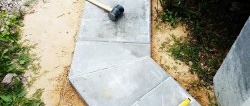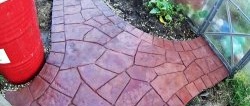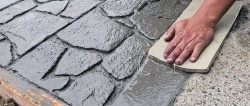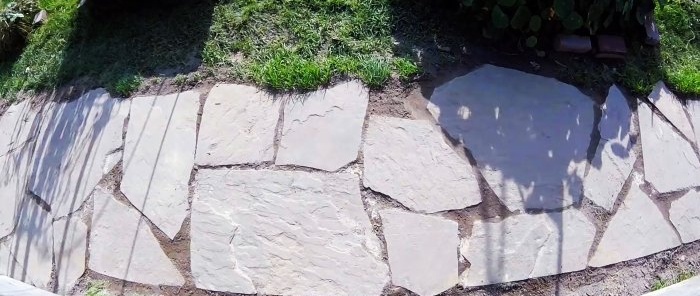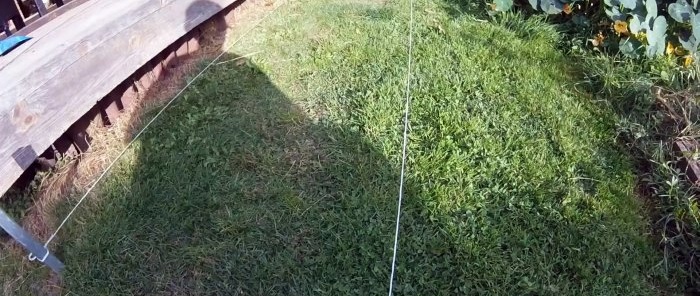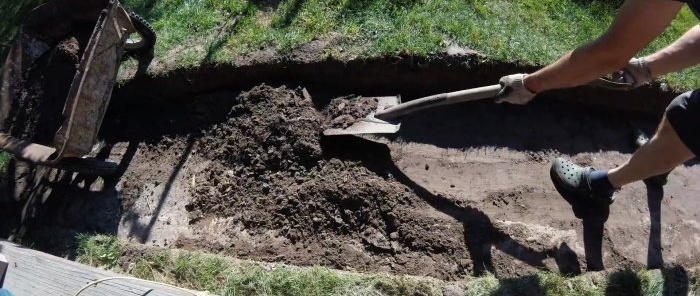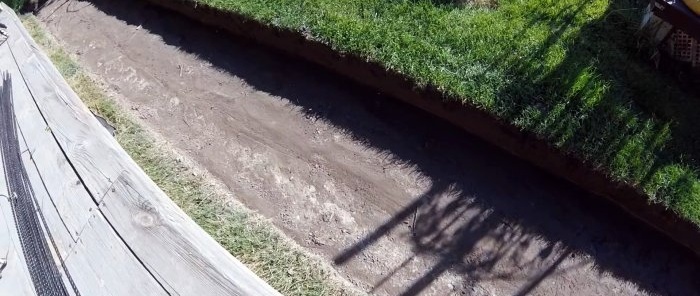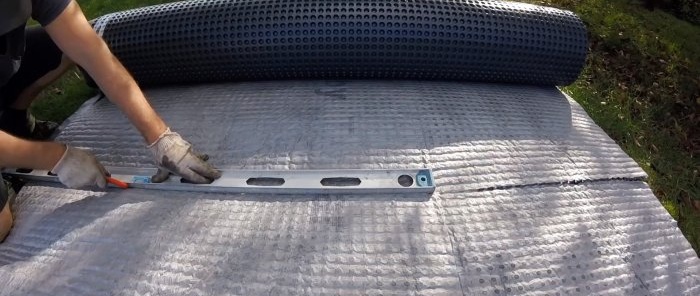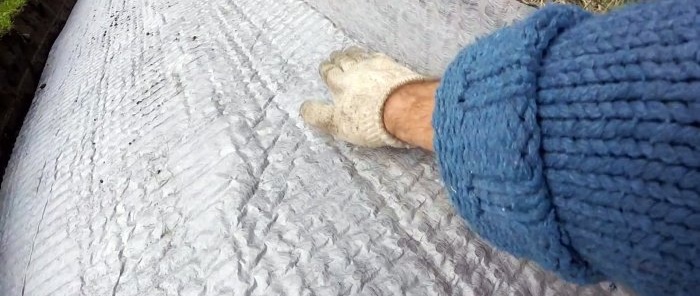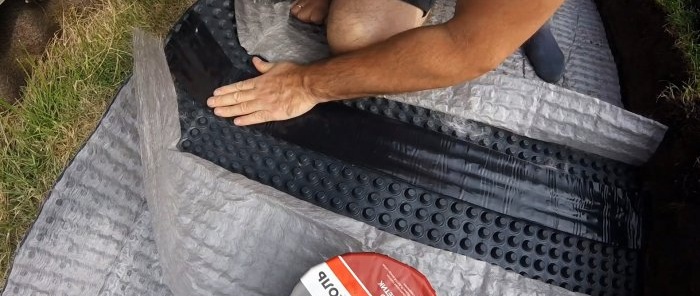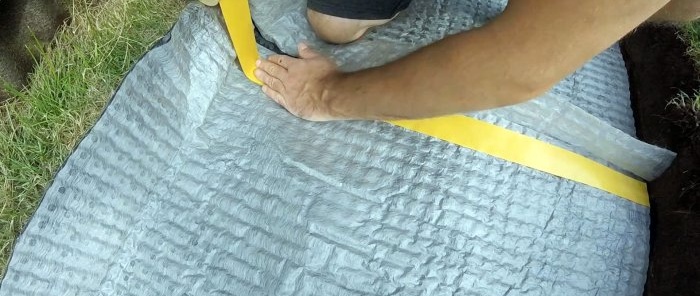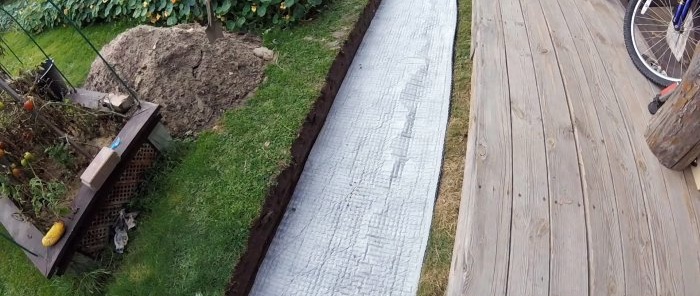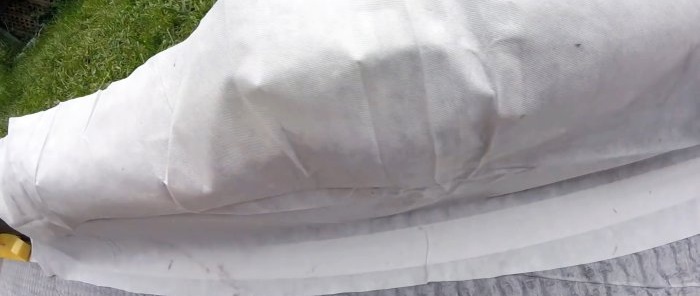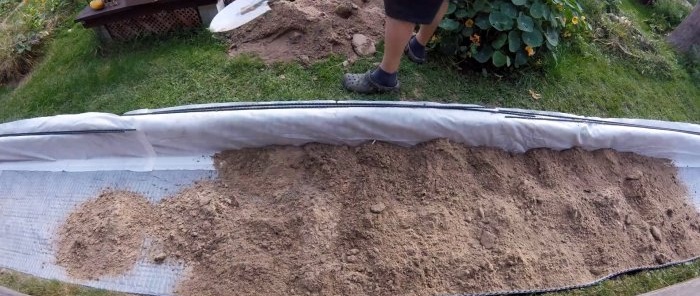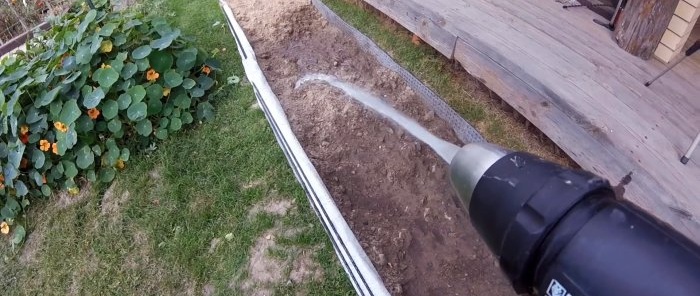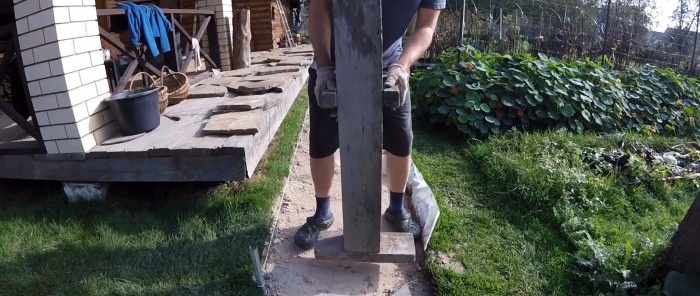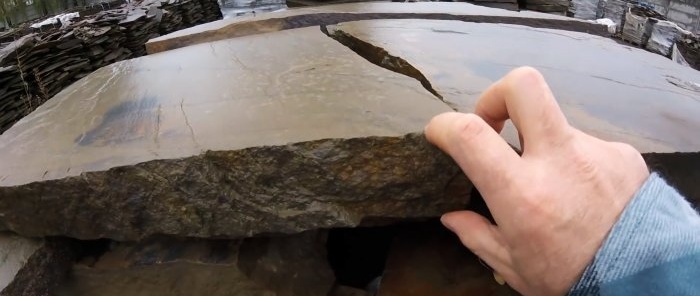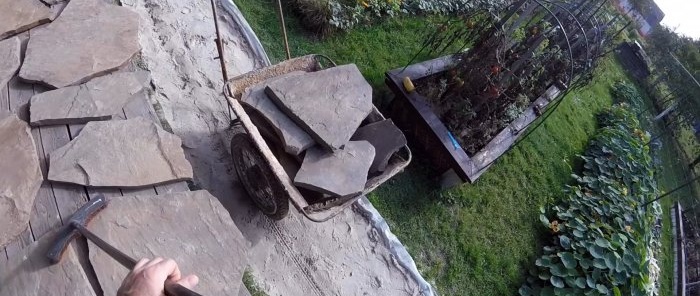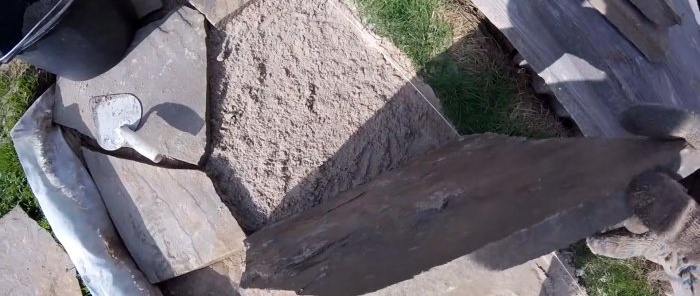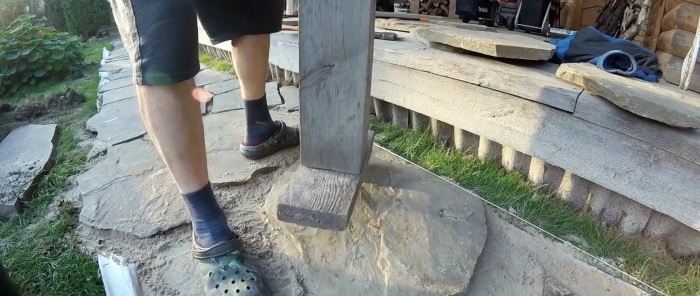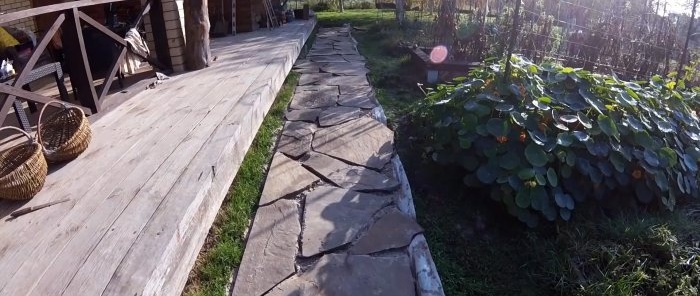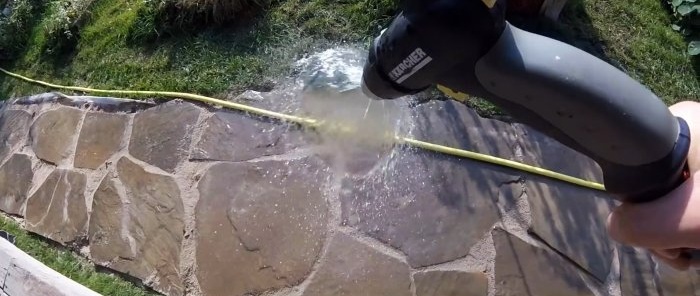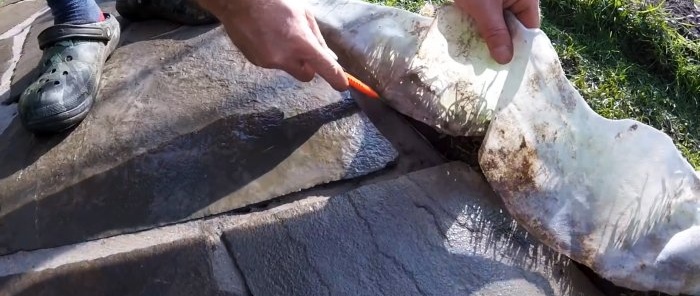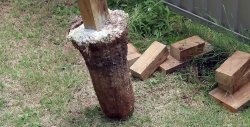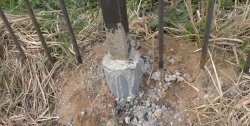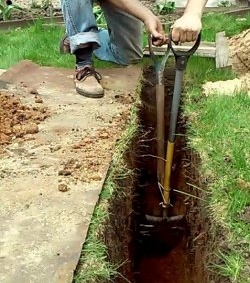A fairly inexpensive way to make a garden path without concrete
Wild stone is a very beautiful and durable material for paving garden paths, but, unfortunately, it is significantly more expensive than concrete tiles. Therefore, having chosen it, it would be nice to save on hiring qualified builders and install it yourself. This is quite possible, even if you have the simplest tools.
What you will need:
- Wild stone;
- profiled membrane;
- sealant tape;
- geotextiles;
- double sided tape;
- sand.
The process of paving a garden path
You need to start the work by marking the path. We drive pegs around its perimeter and stretch the cord along them. Be sure to double-check later that the width between the cords is the same. This is especially important if you plan to use a garden wheelbarrow on the path.
Then we cut through the soil with a shovel along the cord, thereby creating a perimeter for the trench. This will allow you to move the rope out of the way. Then we select the soil to the depth of the spade bayonet. You must try not to undermine the soil at the bottom of the trench so that it remains dense. It is also important to make the bottom slope to the right or left to drain sediment.
A profiled membrane is laid at the bottom of the trench.If it is wide, then you can lay it on the side, but not on the side where the water should flow.
If pieces of the membrane need to be joined, this is done by laying them overlapping on 4 rows of pimples. The connections are sealed with sealant tape. That is, the soil under the membrane will always remain dry, so frost heaving does not threaten the path.
Since the trench will be filled with sand, it is necessary to fence off the soil located on the side from it. From the elevated side, you can initially lay the membrane on the side. On the contrary, on the water drainage side, the side should be covered with geotextile, glued to the membrane with double-sided tape.
Sand is poured into the prepared lined trench. It is poured in thin layers and filled with water. This way it will be compacted no worse than using a vibrating rammer.
The last leveling layer should be poured along the cord. Where necessary, level the sand with a wide spatula or rule. We no longer fill the last layer with water, but compact it with a hand tamper. This is done until there are no more footprints left in the sand.
Next, add the thinnest layer of sand, and lay wild stone on it.
We try to select the plates according to their shape so as to leave minimal gaps when joining.
You can plant stones with a rubber mallet, or by lightly tapping them with the same tamper.
You can lay the stone even without trimming with a grinder, but then the path will have torn edges, which looks very decent after it is overgrown with grass. The gaps between the tiles are filled with sand and water is poured to compact it.
At the end of the work, all that remains is to cut off the protruding sides of the membrane and geotextile.
6 useful devices for your garden with AliExpress - https://home.washerhouse.com/en/6491-6-poleznyh-prisposoblenij-dlja-vashego-sada-s-alijekspress.html
Watch the video
Similar master classes
